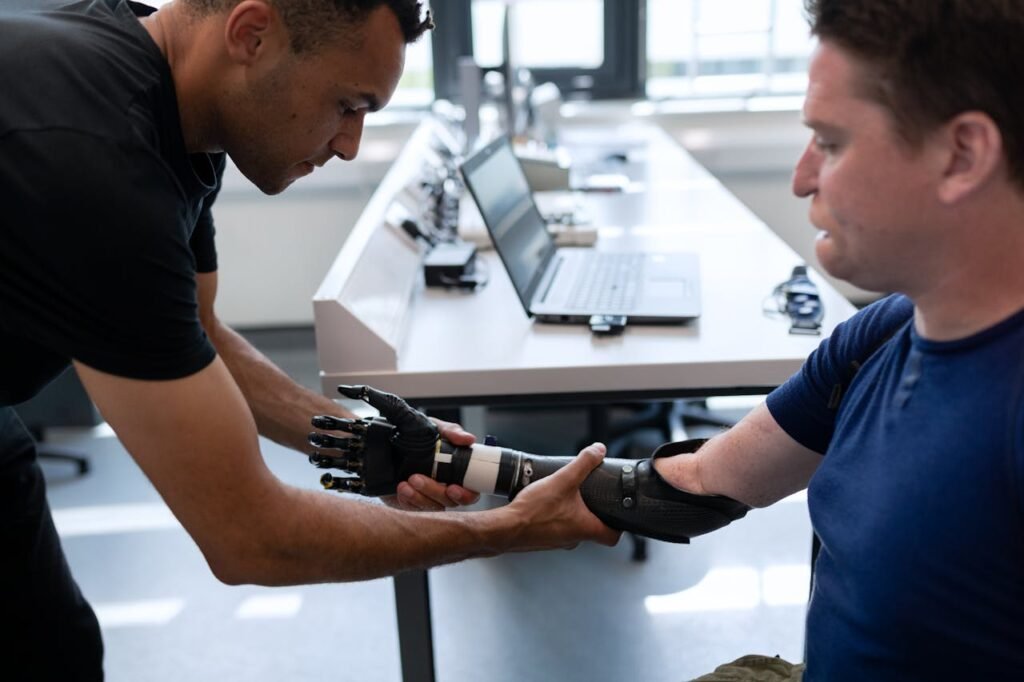An accessible home is more than a space designed to accommodate physical needs—it is a gateway to independence, comfort, and dignity for individuals with disabilities. A well-thought-out environment can make everyday tasks seamless, enhance safety, and empower individuals to live with confidence. While creating an accessible home might seem daunting, it’s a journey that combines thoughtful planning with practical solutions tailored to individual needs.
This article explores the key elements of designing an accessible home, offering actionable advice that strikes a balance between functionality and aesthetics. Whether you’re planning for yourself, a loved one, or your clients, these insights will guide you in creating a space that fosters true independence.
Understanding Accessibility: A Foundation for Freedom
Accessibility begins with understanding the unique challenges and needs of the person living in the space. From navigating rooms to operating appliances, every detail matters when fostering an independent lifestyle. Creating an accessible home isn’t just about meeting regulations or adding ramps; it’s about enabling the person to feel in control of their environment.
Designing for Specific Needs
Each individual has specific requirements based on their abilities. For someone with mobility challenges, ensuring barrier-free movement is critical, while for individuals with visual impairments, tactile and auditory cues may be essential. Tailoring the design to address these unique needs ensures that the space feels intuitive and easy to navigate.
Businesses specializing in accessibility, like ours, can offer consultation services to help families and individuals assess their homes. Providing virtual assessments or on-site evaluations ensures that modifications align with the user’s specific lifestyle.
The Heart of the Home: Kitchen Accessibility
The kitchen is often the hub of the home, and ensuring its accessibility is crucial for promoting independence. A well-designed kitchen empowers individuals to prepare meals safely and efficiently while maintaining a sense of control over their daily routines.
Countertops and Workspaces
Accessible countertops should be positioned at a height that accommodates wheelchair users or individuals who prefer seated tasks. Pull-out work surfaces provide added flexibility, offering additional workspace when needed. Incorporating rounded edges on counters minimizes the risk of injury, especially in smaller kitchens where mobility devices may be used.
For individuals with visual impairments, incorporating contrasting colors between counters and cabinets enhances spatial awareness. Textured surfaces or tactile indicators on appliances can further aid in navigation.
Appliances and Storage
Modern appliances now offer features designed for accessibility. Wall-mounted ovens at an appropriate height reduce the need for bending, while induction cooktops with safety sensors prevent accidental burns. Refrigerators with side-by-side doors are easier to access, and pull-out shelves within cabinets simplify storage.
Smart technology is a game-changer in this regard. Voice-activated appliances or those with smartphone compatibility allow users to operate their kitchen tools hands-free. Businesses can enhance their offerings by partnering with smart appliance manufacturers to provide affordable, accessible options for clients.

Ensuring Safety and Comfort in Bathrooms
The bathroom is one of the most critical areas to address when creating an accessible home. It is a space where safety, comfort, and privacy must converge seamlessly. A well-designed bathroom reduces the risk of accidents and ensures individuals can maintain their independence in personal care routines.
Barrier-Free Entry and Space Optimization
An accessible bathroom begins with a barrier-free entry. Doorways should be widened to at least 32 inches to accommodate wheelchairs, and sliding doors or pocket doors are excellent options to save space and allow easier access.
Inside, the layout should prioritize maneuverability, ensuring sufficient room for wheelchairs or other mobility aids to turn and navigate.
For individuals with visual impairments, thoughtful spatial organization is key. Items like soap dispensers, toothbrush holders, and towels should be stored in designated spots to maintain consistency and avoid confusion.
Businesses offering home modification services can assist in creating layout designs that optimize functionality without compromising aesthetics.
Showers and Bathtubs
Roll-in showers with no barriers are ideal for wheelchair users or individuals with limited mobility. Adding a sturdy, adjustable shower seat provides comfort and reduces the risk of slips or falls. Handheld showerheads with long hoses offer flexibility and allow for more control during use.
If a bathtub is preferred, installing a walk-in tub with a secure door and anti-slip surfaces is essential. Grab bars near the tub or shower area add an extra layer of safety, ensuring users can maintain balance. These bars should be placed at the correct height and secured to withstand significant weight.
Toilets and Sinks
Toilets designed for accessibility are typically raised, reducing the effort needed to sit or stand. Adding a grab bar near the toilet further enhances safety. Automatic or touchless flush mechanisms are convenient for users with limited dexterity.
Sinks should be mounted at a height that accommodates wheelchair users, with enough clearance underneath for their legs. Single-lever faucets or touchless options make it easier for individuals with arthritis or motor impairments to control water flow and temperature.
Navigating the Living Spaces
Living areas serve as communal and personal spaces, making their accessibility critical for fostering independence and comfort. The design should prioritize ease of movement, practical furniture arrangements, and smart technology integration.
Open Layouts for Free Movement
Creating an open layout eliminates unnecessary obstacles and allows individuals to navigate freely. Furniture should be arranged with ample space between pieces, ensuring clear pathways for wheelchairs or mobility aids.
Low-profile furniture reduces the risk of tripping, while adjustable-height tables or recliners provide comfort and functionality. For individuals with sensory sensitivities, adding soft textures and warm lighting can create a calming environment.
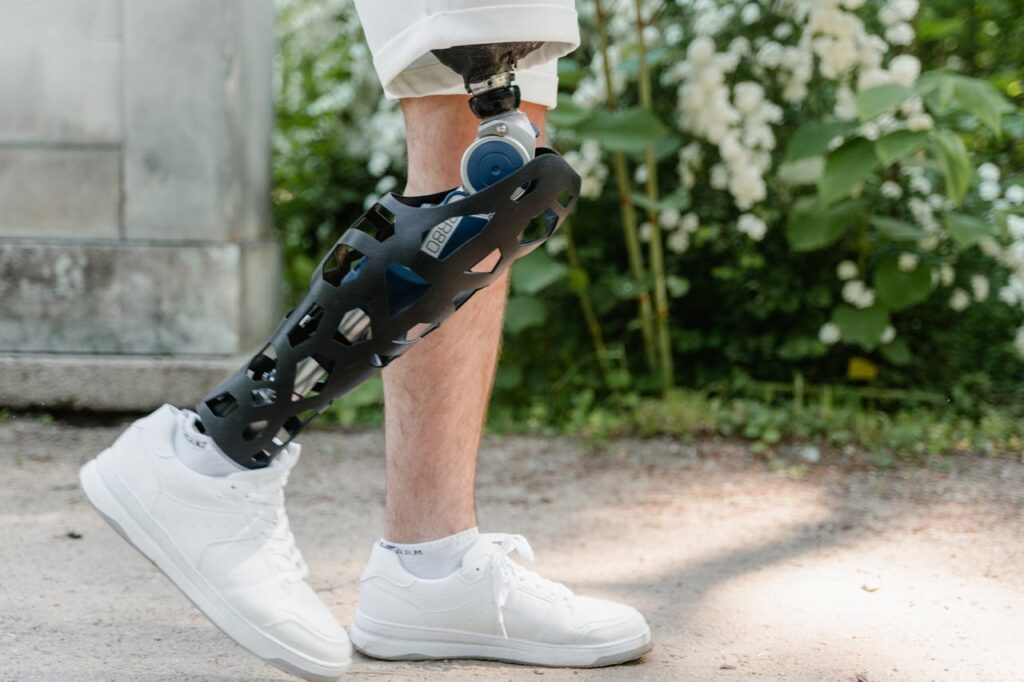
Smart Home Integration
Smart home technology can transform living spaces into highly intuitive environments. Voice-activated systems allow users to control lighting, adjust thermostats, or play music without needing to move around the room. Motion sensors for lights ensure that rooms are well-lit as soon as someone enters, reducing the risk of falls in low-visibility situations.
Businesses that specialize in smart technology can offer packages tailored for accessibility. Partnering with electricians or automation experts ensures seamless installation and optimal performance for clients.
Enhancing Outdoor Accessibility
The benefits of an accessible home extend beyond its interiors. Outdoor spaces, such as gardens, patios, or driveways, are equally important for fostering a sense of freedom and connection with nature.
Creating Accessible Pathways
Outdoor pathways should be wide, even, and free of obstacles. Smooth, non-slip surfaces such as concrete or pavers are ideal for wheelchairs or walkers. Incorporating ramps with gentle slopes and sturdy railings ensures safe transitions between levels.
Businesses offering landscaping services can integrate accessibility into their designs, creating aesthetically pleasing outdoor areas that are also functional. Raised garden beds, for example, allow wheelchair users to engage in gardening without strain.
Ensuring Safety in Outdoor Spaces
Outdoor lighting is essential for visibility and safety, especially near stairs, ramps, or uneven surfaces. Solar-powered lights or motion-sensor fixtures provide efficient and environmentally friendly options.
For individuals with mobility challenges, adding covered walkways or shelters ensures they can move between spaces comfortably, even during adverse weather conditions. Businesses that specialize in outdoor furniture can design durable, accessible seating options for patios or gardens, combining practicality with style.
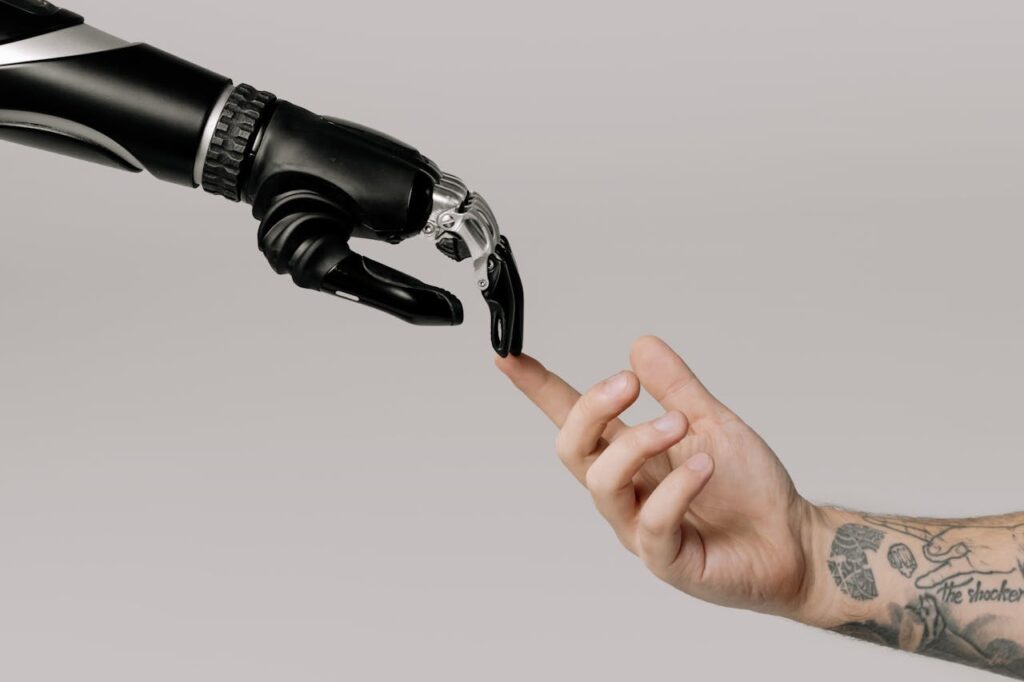
Personalizing Bedrooms for Comfort and Accessibility
The bedroom is a sanctuary, a place of rest and relaxation. For individuals with disabilities, it must also be a space designed with thoughtful accessibility features that ensure comfort and independence. Creating a bedroom that is both functional and personalized allows individuals to feel at home while meeting their unique needs.
Adjustable Beds and Bedding Solutions
Adjustable beds are invaluable for individuals with mobility challenges or chronic pain. These beds allow users to change positions with ease, improving comfort and reducing the risk of pressure sores. Features such as remote controls or voice-activated adjustments further enhance usability.
For businesses in the bedding industry, offering accessible options like hypoallergenic bedding, weighted blankets, or customized mattress solutions ensures that users can enjoy restful sleep while addressing their specific needs. Highlighting the therapeutic benefits of these products in marketing campaigns reinforces their value.
Accessible Closets and Storage
Closets and storage areas should be designed to ensure that individuals can access their belongings without assistance. Installing pull-down rods for clothing, sliding doors, and adjustable shelving creates a user-friendly environment. Drawer handles and closet knobs should be easy to grip for individuals with limited hand strength.
For individuals with visual impairments, tactile labeling or color-coded systems can make it easier to organize and locate items. Businesses offering organizational products can cater to these needs by developing solutions specifically designed for accessibility, such as modular storage units or easy-install systems.
Lighting and Controls
Bedroom lighting should prioritize both functionality and ambiance. Adjustable lighting, such as dimmable lamps or smart bulbs, allows individuals to control the brightness according to their needs. For those with limited mobility, bedside controls or voice-activated systems ensure convenience.
Nightlights or motion-activated lighting provide additional safety during nighttime movements, reducing the risk of falls. Businesses in the lighting industry can expand their offerings by incorporating these features into their product lines and educating customers on the benefits of accessible lighting solutions.

Promoting Independence Through Technology
Technology has become a cornerstone of accessibility, offering solutions that empower individuals to take charge of their living spaces. From home automation systems to wearable devices, integrating technology into an accessible home ensures that individuals can perform everyday tasks with minimal effort.
Voice and Touch Control Systems
Voice-activated systems, such as Alexa, Siri, or Google Assistant, are revolutionizing accessibility by enabling users to control various aspects of their homes. From adjusting thermostats and playing music to locking doors and opening curtains, these systems allow for hands-free operation.
For individuals who prefer touch-based controls, devices with simple interfaces and large icons provide an alternative. Tablets or smartphones can be configured with accessibility settings, ensuring that technology remains intuitive and user-friendly.
Businesses that offer home automation services can enhance their customer experience by providing installation support and user training, ensuring that clients feel confident using these technologies.
Wearable Technology for Safety
Wearable devices, such as smartwatches or pendants, offer real-time safety and communication features. These gadgets can monitor vital signs, detect falls, and send emergency alerts, providing peace of mind for both users and their caregivers.
For example, a smartwatch with GPS tracking allows users to explore their surroundings without fear of getting lost, while fall detection sensors can notify caregivers instantly in case of an accident.
Businesses specializing in assistive technology can partner with healthcare providers to make these devices more accessible and widely adopted.
Custom Apps for Accessibility
Custom mobile applications designed for accessibility can further enhance independence. Apps that integrate with smart home systems, provide medication reminders, or offer guided navigation for individuals with visual impairments are just a few examples of how technology can make everyday life easier.
For businesses, developing or collaborating on such apps provides an opportunity to meet the unique needs of individuals with disabilities. Offering these apps as part of a package with other products or services ensures a seamless user experience.
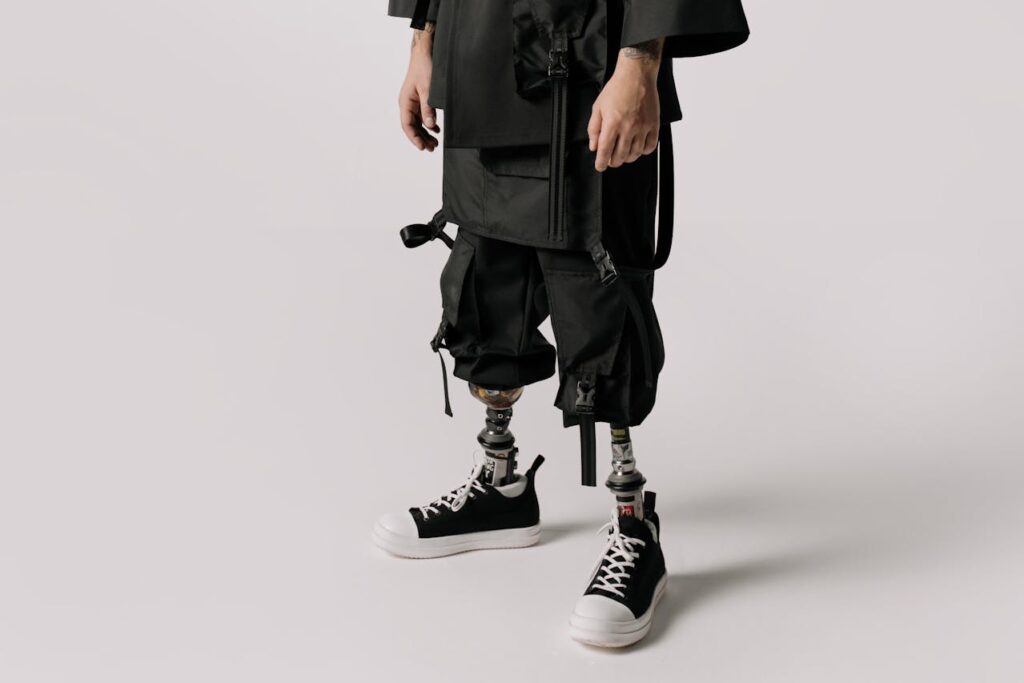
The Economic and Social Benefits of Accessibility
Creating an accessible home is not just an investment in an individual’s independence—it is an investment in the broader social and economic well-being of communities. Accessible homes enable individuals to participate fully in society, reducing reliance on caregiving services and promoting self-sufficiency.
Reducing Long-Term Costs
While the initial cost of accessibility modifications may seem high, these investments often result in long-term savings. For example, installing grab bars, slip-resistant flooring, and home automation systems reduces the likelihood of accidents, minimizing medical expenses and caregiving needs.
Businesses can emphasize these economic benefits in their marketing strategies, helping potential clients understand the value of proactive accessibility planning. Offering financing options or partnerships with insurance providers further lowers financial barriers for customers.
Enhancing Quality of Life
Accessibility is about more than physical modifications—it is about enhancing an individual’s overall quality of life. A home that fosters independence allows individuals to pursue hobbies, maintain relationships, and engage in meaningful activities without feeling restricted.
For businesses, showcasing the transformative impact of accessible home solutions through testimonials or case studies demonstrates the tangible difference their products and services make.
Partnering with advocacy groups or community organizations to raise awareness about the importance of accessibility further reinforces their commitment to social impact.
The Role of Aesthetics in Accessible Design
Accessibility and aesthetics are not mutually exclusive. An accessible home can and should be a beautiful, welcoming space that reflects the personality and preferences of its residents. Combining functionality with thoughtful design ensures that individuals feel not just accommodated but truly at home.
Seamless Integration of Features
One of the key challenges in accessible design is ensuring that features like grab bars, ramps, and adaptive furniture do not feel clinical or out of place. By incorporating materials, colors, and styles that match the overall aesthetic of the home, these elements can blend seamlessly into the space.
For example, grab bars can be designed with sleek finishes and integrated into the bathroom’s overall decor. Ramps can be constructed with natural wood or stone to complement outdoor landscapes. Businesses that offer custom design services for accessibility features can differentiate themselves by focusing on personalization and style.
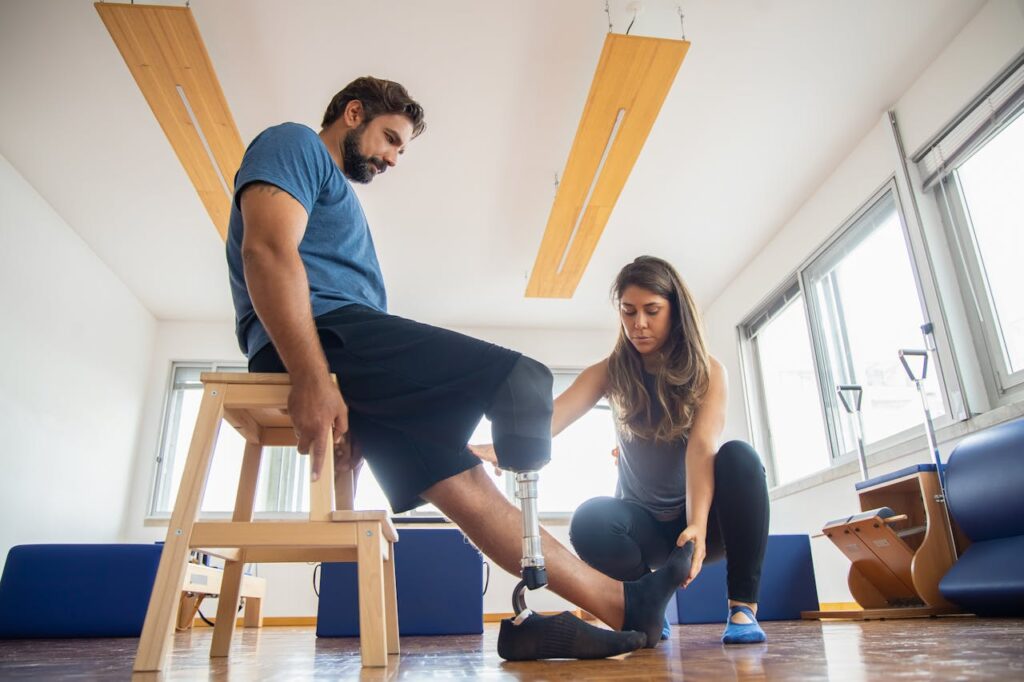
Customization as a Design Principle
Personalization plays a significant role in making accessible homes feel inviting. Allowing individuals to choose colors, patterns, and finishes for their accessibility features gives them a sense of ownership and pride in their space.
For instance, offering customizable options for mobility aids, such as wheelchairs or walkers, ensures that these tools are both functional and aligned with the user’s aesthetic preferences. Businesses can collaborate with interior designers to offer holistic solutions that cater to both accessibility and design needs.
Using Technology to Enhance Design
Technology can bridge the gap between functionality and aesthetics. Smart home systems that allow for hidden controls, such as recessed lighting switches or voice-activated curtains, maintain a clean and uncluttered look while enhancing accessibility.
Businesses specializing in smart home technology can work with architects and interior designers to create visually appealing solutions that align with modern design trends. Highlighting these partnerships in promotional efforts showcases the company’s ability to deliver both form and function.
Educating Homeowners and Builders on Accessibility
Creating accessible homes requires collaboration among homeowners, architects, contractors, and designers. Educating these stakeholders about the principles of accessibility ensures that the process is informed, efficient, and aligned with the needs of the individual.
Awareness Campaigns
Many people, including homeowners and builders, are unaware of the possibilities that accessible design offers. Awareness campaigns can address misconceptions, showcase successful projects, and provide practical guidelines for creating accessible spaces.
Businesses can lead these efforts by hosting seminars, webinars, or online tutorials that highlight the importance of accessibility and demonstrate how it can be seamlessly integrated into any home. Partnering with disability advocacy organizations can add credibility and reach to these initiatives.
Providing Accessible Design Toolkits
A design toolkit that includes templates, checklists, and resources can empower builders and homeowners to implement accessibility features effectively. These toolkits could cover everything from recommended dimensions for doorways to guidance on selecting adaptive appliances.
For businesses, offering these resources as part of a service package adds value and positions them as leaders in the accessibility industry. Ensuring that these materials are easy to understand and widely available fosters greater adoption of accessible practices.
Partnering with Communities for Broader Impact
The impact of accessible home design extends beyond individual households—it benefits entire communities by promoting inclusivity and setting an example for others to follow. Businesses can amplify their influence by partnering with local governments, community organizations, and nonprofits to advocate for accessible housing initiatives.
Supporting Affordable Accessibility
Affordability remains a significant barrier to creating accessible homes, particularly for individuals from low-income backgrounds. Businesses can address this challenge by collaborating with housing programs to offer affordable solutions, such as modular ramps or subsidized adaptive furniture.
Partnering with nonprofits to sponsor accessible home builds or renovations can further extend the reach of these efforts. Sharing stories of these projects through blogs, social media, or press releases highlights the company’s commitment to social responsibility.
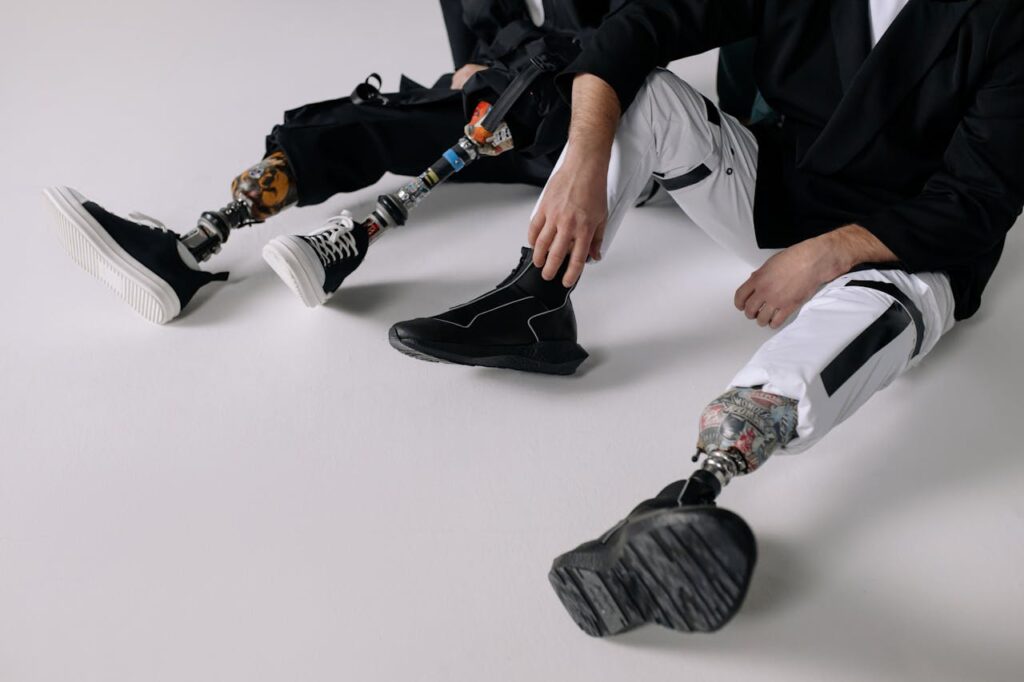
Encouraging Universal Design Standards
Universal design—a concept that ensures spaces are usable by all people, regardless of ability—is a forward-thinking approach to accessibility. Businesses can advocate for universal design principles by incorporating them into their product lines and services.
For example, creating products that are equally accessible to individuals with and without disabilities promotes inclusivity while appealing to a broader audience. Educating architects and developers on the benefits of universal design can encourage its adoption in new construction projects, driving long-term change.
Conclusion
Creating an accessible home is about more than physical modifications—it is about fostering independence, dignity, and a sense of belonging. By prioritizing functionality, safety, and aesthetics, accessible design transforms living spaces into empowering environments.
For businesses, supporting this transformation is an opportunity to make a meaningful impact. Whether through innovative products, educational initiatives, or community partnerships, companies have the tools to shape a future where every individual can thrive in their own home.
Accessibility is not a one-time goal but an ongoing journey. As technology advances and societal awareness grows, the possibilities for creating inclusive homes will only expand. Together, we can build spaces that celebrate diversity, enhance quality of life, and redefine what it means to live independently.



